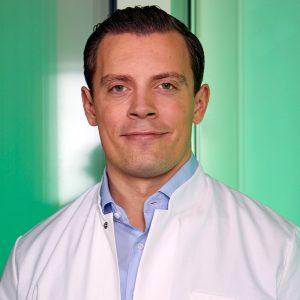Headache and migraine as a disease
Headaches are something most people have experienced at some point in their lives. The unpleasant pressing and pain in the head is often treated with painkillers and narcotics. If the headaches occur not only sporadically, but frequently, not only the well-being in everyday life, but also the performance at work and school are limited. There are many different types of headaches, which can occur in different parts of the head. Some people report dull, pressing, pulling pains (tension pains) that occur on both sides of the head, while others report throbbing, pulsating pains that occur in only one part of the head (migraine). In the case of the so-called tension headaches, improvement often occurs with exercise in the fresh air. Physical activity in general, does not worsen the pain. In contrast, in migraine, the pain gets worse when the sufferer moves. Headaches are classified as migraines when pain attacks with typical symptoms have occurred more than five times. Typical symptoms include Nausea, pulsating pounding or throbbing pain, mostly in the front of the head, pain attacks lasting at least 4 hours and usually for days, and high sensitivity to external sensory stimuli (light, sounds, smell, etc.). In the USA, 1/7 of the population is affected by migraine and therefore limited in their activities. The cause of the pain is largely unknown. It is believed that complex neuronal and hormonal processes play a role in its development. In addition to migraine, many patients have other conditions that are influenced by the main disease. For example, sleep problems, cognitive impairments (e.g. concentration, memory capacity), depression and anxiety are common. Today, migraine and headache are mainly treated with medication. However, this turns out to be problematic for some individuals for whom the medication does not work. Further the pain medications also carry a high risk for addiction. Therefore, alternative treatment is of particular importance. In recent years, new research has been conducted on the pain-relieving effects of cannabis. There are few studies specifically on the effect of cannabis on migraine pain.
Research to migraine and Cannabis
A 2020 study by Stith and colleagues looked at the relationship between cannabis and headaches, especially migraine headaches. The goal of the study was to find out the effect of dried cannabis flowers on headaches and migraines. In addition, the association of the differences in cannabis strains on the intensity of symptom change was investigated.
In the study conducted in the USA, an app was used to record the health data of people who suffered from headaches and/or migraines. The so-called ‘Releaf App’ is used by people who use cannabis for medical purposes and document their use in the app. In the app, users enter the characteristics of the product used (origin, strength, variety, etc.), as well as the reason for use, the amount consumed and the relief of symptoms, feelings experienced during use and side effects experienced. With each use, a new session is started in which both the amount and direct effects of use are recorded. For the study, the researchers used data from 699 people who documented their treatment with cannabis in the ‘Releaf App’. Of these, 493 subjects suffered from tension headaches and 280 from migraines. Participants were categorized based on self-reported symptoms, which they selected from a list of 50 symptoms in the app. Of particular interest to the researchers were the phenotype (C.sativa, C.indica & hybrid), form of ingestion, headache and migraine related pain, and reported side effects during a medical cannabis session. The different product types or phenotypes consisted of Cannabis sativa, Cannabis indica, and hybrid cannabis, which utilizes the properties of two or more strains. Cannabis sativa is characterized by a high delta-9-tetrahydrocannabinol (THC) as well as a low cannabidiol (CBD) content. The effect is described as stimulating, activating and motivating. In addition, users report a reduction in nausea and a stimulation of the appetite. The cannabis strain Indica is known for its high CBD content. The strain’s effects are mainly based on reduction of inflammation, pain relief, promotion of sleep, stimulation of appetite, and reduction of stress and anxiety. For the study of the effect of the different cannabis strains, the pain of the users was recorded before and after the cannabis session on a scale from 0 to 10. The effect on pain was examined up to 2 hours after ingestion.
Results
On average, the users conducted 5 sessions over 65 days. Of particular interest were the sessions in which dried cannabis flowers were used, so only these were analysed. Hybrid strains were used most frequently (54%). For the least frequent sessions, participants used cannabis sativa (16%). The preferential use of Cannabis Indica (30%) and Hybrid Cannabis highlights the analgesic effect of these strains, as this is precisely what is most important among headache and migraine sufferers. Pipes or vaporizers were used in most of the sessions. Only a few patients smoked the medical cannabis as a joint. On average, the flowers contained 18% THC and 8% CBD. Consumption of the flowers significantly reduced pain. In addition, users reported symptom relief in 94% of the sessions. Only a small proportion noticed no improvement and an even smaller proportion reported a worsening of symptoms.
Conclusion
Headaches and migraines are familiar to most people. Due to the permanent stress and restrictions in everyday life, sufferers need a sustainable and effective treatment. The current state of medicine is focused on pain relief, which is mainly achieved through medication. There is a high risk of dependence and for many patients the effect is not the desired one. Therefore new ways of treatment are necessary. The use of medical cannabis for the treatment of pain has not only led to symptom relief but also to high satisfaction among patients.







